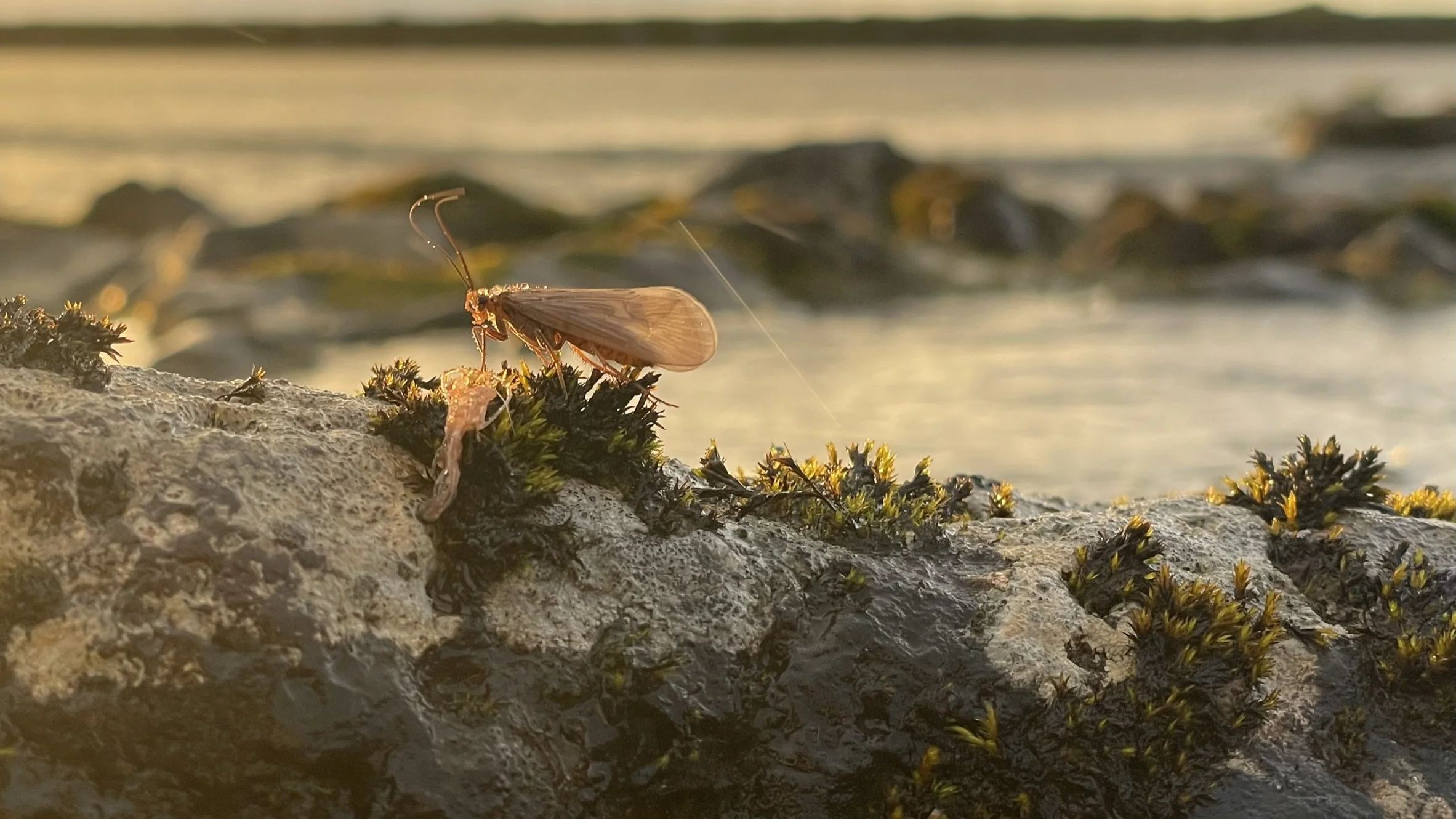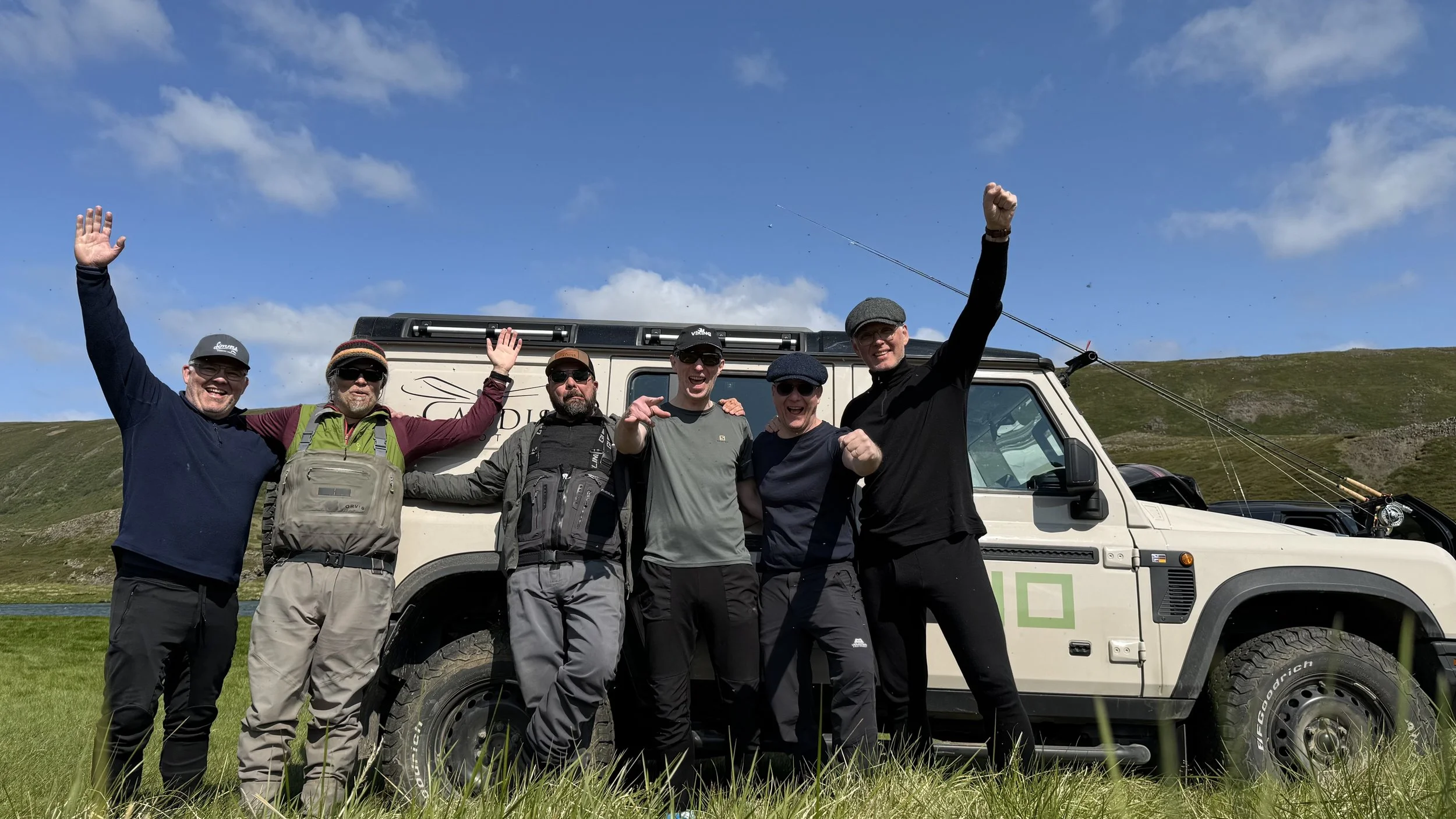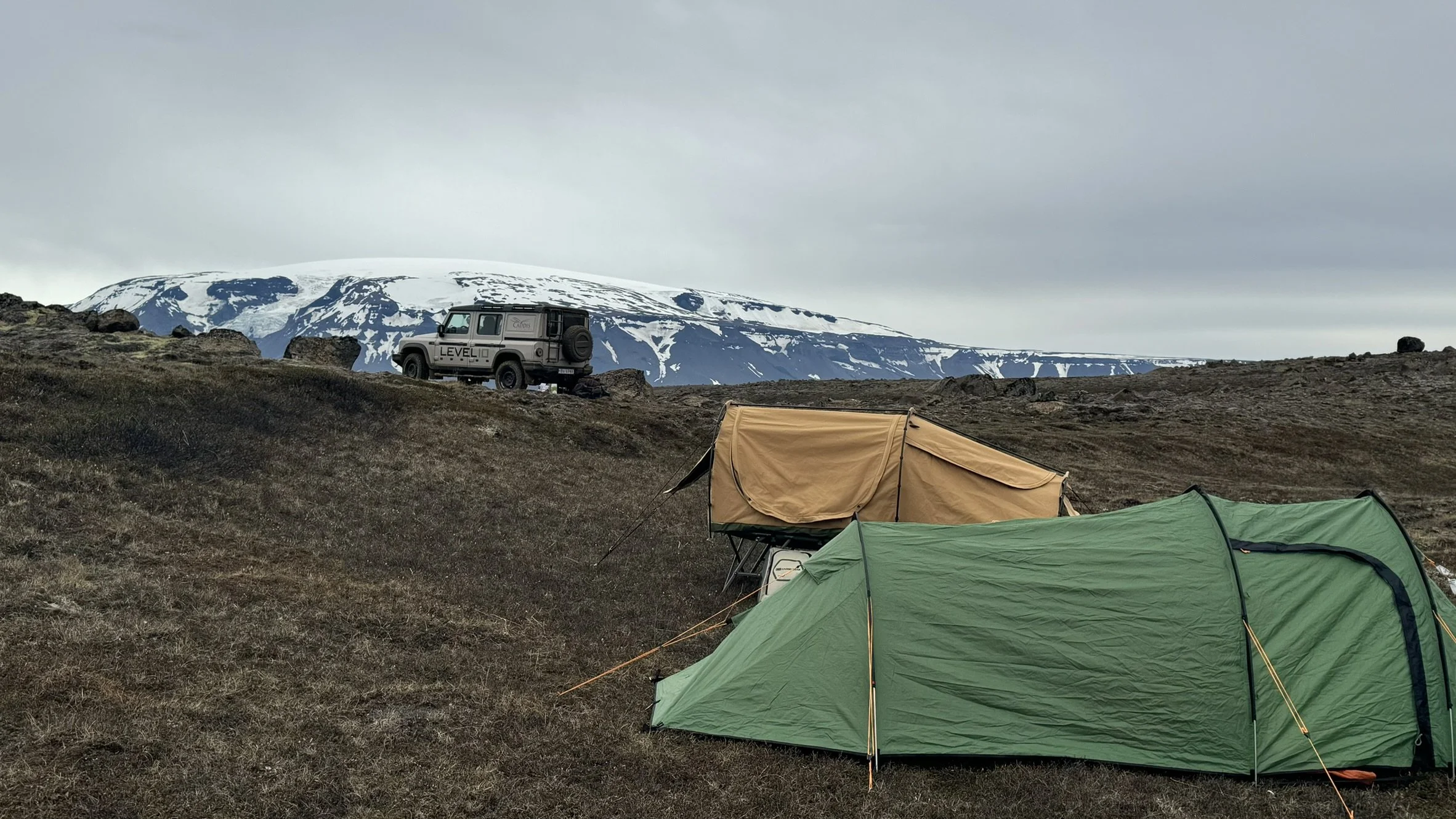Midnight fly fishing in the highlands of Iceland
The story
For about a decade, we have tried to map out the best of trout fishing in Iceland. Our interest in the midnight sun fishing and the big caddis hatches has earned us the name of Caddisbrothers. We have guided, taught classes and written articles to promote our favorite type of fishing to the general public.
From our experience, the best way to enjoy this is in the highlands. The highlands are the purest form of Iceland and offer freedom that is hard to get elsewhere. During these weeks, we fish in the midnight sun until early mornings and experience rare and incredible moments of fishing, natural beauty and camaraderie.
Our fishing buddy Tom heard us talking about this and showed strong interest to join next summer, and possibly bring friends if possible. As we have access to two 4x4 vehicles we have space for 4-6 to join. The itinerary below would be our initial plan but we have backup options depending on weather conditions.
So here is a sample itinerary and other info about the trip we are planning for you and photos from similar trips over the years.
Day 1 – River Norðlingafljót
Beutiful brown trout river that runs through mountains, lava and glaciers. Just recently discovered as a superb wild brown trout fishing river on the border of being accessable.
Pickup in Reykjavík at 07:00
Drive to the highlands, arriving at river nordlingafljót 12.00
Afternoon and night fishing in Norðlingafljót
Overnight in highland cabin or tents
River Norðlingafljót is a large river that runs from just north of Langjökull glacier west for 70km where it merges with the Hvítá Glacier river. The river is considered by many to be one of the most beautiful rivers in Iceland. Running through a lush heath and volcanic landscapes with towering glaciers and mountains in the distance. It runs in large parts through the Arnarvatnsheiði(“Eagle Lake Heath”, a large fishing area consisting of countless mountain lakes and streams).
The river holds a healthy stock of wild and native Brown Trout and Arctic Char. With common sizes of browns being in the 2-6 pound range and Chars between 2-4 pounds. The largest fish caught was a 13-pound brown trout. Parts of the river are easily accessible by 4×4 but some sections require extensive hiking to fish and the more anglers are willing to hike the more likely they are to be successful by reaching areas of the river that rarely get fished.
The only accommodations options near the river are sleeping bag accommodations at mountain huts like Álftakrók cabin which has running water and bathroom facilities. The other option would be camping along the river or driving 50min down to the town of Húsafell.
Day 2 – River Austurá
An hour drive from Nordlingafljót is this small beutiful trout river called Austurá. This is one of our favorite spots.
Day fishing in Austurá
Rest / Option of bathing or other activities
Midnight fishing session
Lodge or tents overnight
Austurá is a remote and scenic river located in the heart of Arnarvatnsheiði, a vast highland plateau dotted with countless lakes and streams. This spring-fed river winds its way through volcanic terrain and moss-covered lava fields, creating a unique and intimate fishing experience. Though smaller and more delicate than Norðlingafljót, Austurá offers exceptional fishing in crystal-clear waters.
We select Austurá mostly for its midnight Caddis hatch which should be at its peak in the time of the trip. Access to Austurá is limited. Some upper sections can be reached by 4×4 vehicles during summer, but anglers often need to hike into more remote pools and bends. The river sees very little pressure, and those willing to walk will often find untouched water.
Day 3 – Akureyri town / River Svartá
After 2 days of fishing it is perfect to take a short brake in the civilization.
We sleep well and drive north (About 3 hour drive)
Stop in Akureyri for restaurant & hot spring baths
Midnight fishing in Svartá river (more info in day 4)
Overnight Kiðagil Hotel or tents.
Day 4 – River Svartá
This river hosts some of the strongest brown trout and big artic chars.
Day to relax / explore or fishing
Final midnight fishing on different Svartá beats
Overnight Kiðagil Hotel or tents.
Svartá í Bárðardal meanders from Lake Svartarvatn on the high plateau of Eyvindarstaðaheiði, flowing roughly 4 km through rolling heath and volcanic terrain before joining the glacierfed Skjálfandafljót . The river is flanked by barren lava fields and overlooks the dramatic Bárðardalur valley to the west, offering solitude amid stark northern highland scenery .
This springfed stream supports a healthy wild population of native brown trout, predominantly in the 3–6 lb range, with a few notably larger specimens landed each season. Fishing pressure remains light—only a few accommodations are arranged per season, and upper river beats are restricted or closed to fishing entirely. That makes Svartá ideal for anglers seeking unpressured water and serious trout challenges.
Day 5 – Departure
Drive to Akureyri
Drop-off for flights to RVK
What would be included:
Pick up in Reykjavik, drop off in Akureyri
Transportation and basic lodging options such as cabins and tents
Fishing licenses
Meals at remote fishing spots
Guiding and support
Curated selection of flies and tippets
What is NOT included:
Air fares, hotels, resturants, upgraded lodgeing (if required)
Hot spring fees in Akureyri
Insurance etc.
Additional food and beverages
Extra cost because of change of plans, sickness, accidents etc
Estimated cost per person is est. 4.000 EUR (min 4 anglers)
Other information
You need to bring:
Warm cloths and basic fishing equipment
You need to be ready for:
Tough weather
Strong fish
Rugged lifestyle
Unpredictable situations














